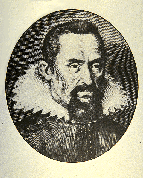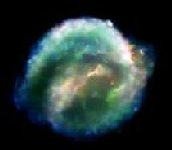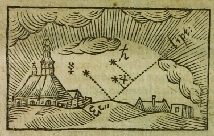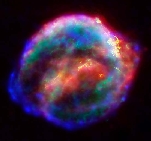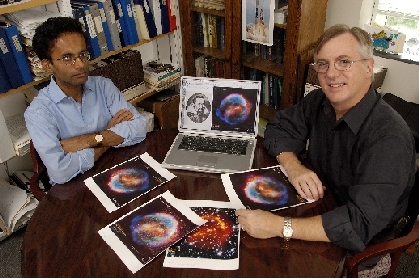

October 9, 2004 marked the 400th anniversary of the first sighting of the supernova of 1604 AD, now known colloquially as Kepler's supernova. On this page I provide some general information and links about both the historical and scientific aspects of Kepler's supernova and expanding supernova remnant that we see today. Related links:
Historical information: Who was Kepler? We are indeed talking about Johannes Kepler, the famous astronomer and mathematician who was a contemporary of Tycho Brahe and Galileo Galilei. Kepler is most remembered for his three laws of planetary motion, which were derived in no small part by using the observational data amassed by Tycho Brahe. In 1604, Kepler was the court astronomer for emperor Rudolph II in Prague. Why is it called "Kepler's" supernova (and supernova remnant)? Most people assume that because the supernova of 1604 was named after Kepler, that he must have been the first to see it. WRONG! Historical reports indicate that the supernova was first seen by observers in northern Italy on the evening of October 9, 1604, and far eastern (Chinese and Korean) within days thereafter. In Prague, an independent sighting was made on October 10th through a break in the clouds, by J. Brunowski, described as a meteorologist (the local weatherman!), who reported the sighting to Kepler. (This apparently led to the long-standing tradition of having the local weatherman report "science" stories on TV stations across the country...) Cloudy weather in Prague prevented Kepler from observing the object until the evening of October 17th. Of course, there was no internet or e-mail, so none of these observers knew anything about what anyone else was doing!
Scientific Background: I have recently written an overview paper on Kepler's supernova remnant for the international conference 1604-2004: Supernovae as Cosmological Lighthouses, held in Padua Italy in June 2004. This presentation is available in PDF file format HERE.
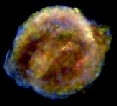
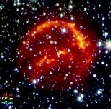

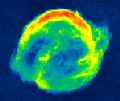
Caption: Four views of Kepler's SNR. (Left to Right) Chandra X-ray Observatory, Spitzer Space Telescope (IR), Hubble Space Telescope (optical, enlarged), and the Very Large Array radio telescope view. Click on any image to see a larger version. Supernova remnants are inherently multiwavelength objects. The supernova blast wave moves outward at thousands of miles per second, sweeping up surrounding material into a glowing shell of gas and dust. The gas and dust are heated by the blast wave, but subsequently cool back down, emitting the whole gambit of electromagnetic radiation, from radio waves through X-rays.
Caption: Ravi Sankrit (left) and Bill Blair (right) inspect images of Kepler's supernova remnant in Bill's office at JHU. (Photo by Will Kirk, JHU.) Click on image to see a larger version. Many of these aspects of the supernova remnant can be inferred from the individual data sets, but seeing them combined shows the relationships between the different emitting components in a much different way. For example, the infrared (Spitzer) image is brightest at and surrounding the regions that are seen by Hubble. This means the heated dust comes from the same component seen by Hubble, which is shocked circumstellar and interstellar material. ("Circumstellar" just means material that was surrounding the star, and likely shed from the star, before it exploded. It didn't have to be that way. We thought the Spitzer observations might be brightest in the interior X-ray regions, where dust might have formed from the ejected stellar material, but that's not what we see. The combined image is really an example of the total being greater than the sum of the parts!
An image combining the best data sets from all three Great Observatories,
as well as lots more supporting information,
was released for the 400th anniversary of the sighting of Kepler's
supernova remnant, and is available at the following links:
|
